Extension tube for use with Gastec samplng systems 10m length
₦75,150.00 Save:₦15,030.00(17%)
These synthetic rubber extension hoses allow for remote measurement down manholes and into tanks.Available in 5m, 10m and 30m lengths.NB with the 30m hose only some tubes will still present accurate results - please contact us with further details of your requirements if you need this option. GASTEC Gas detector tubes Gas detector tubes
GASTEC gas detector tubes are thin glass tubes with calibration scales printed on them so you can directly read the concentrations of the substances (gases and vapours) to be measured. Each tube contains a particulate matrix (e.g. silica gel, alumina), which binds carefully selected and highly stable detection reagents that are especially sensitive to the target substance to produce a distinct layer of colour change. The tubes are hermetically sealed at both ends.
Currently, over 600 types of target gas can be measured.
Features
On-site measurements can be performed easily by anybody, anytime and anywhere, quickly.
Easy-to-check direct reading possible due to calibrated scale directly printed on the tube
An extensive measuring range can be obtained by adjusting the sampling volume.
For high precision, each production lot is tested and calibrated independently. Each detector tube has its quality control number printed on the tube.
Long shelf-life with excellent long-term stability
Operating environment
Most GASTEC tubes can be used in the temperature range of 0 - 40?C and relative humidity range of 0- 90%. However, a few tubes have different temperature or humidity ranges. Please refer to the instruction manuals before use.
Gas sampling pump
The handy design GASTEC GV-100 cylinder pump, with an inner capacity of 100mL, weighs only 240g. It is designed for use with almost all GASTEC short-term measurement detector tubes.
?
Standards
The following table provides an overview and comparison of JIS K 0814 and major international industrial standards.
?
?
Standard /
Requirements
JIS K 0804:2022
ISO17621:2015
lUPAC
(published in 1982)
ANSl / ISEA
102-1990?(R2015)
Sampling pump
Volume
??5%
??5mL
??5%
??5%
Air leakage
?3%
?3mL/min
? 3%/min
? 3%/min
Durability
1000 pump strokes
1000 pump strokes
-
100 pump strokes
Detector tube
Obliqueness of the boundary discolouration
?20%
?20%
?20%
?20%
Measurement performance
Class A
B*
?15%??(Conc. of 33.3% or more of MS***)
?15 to 25%(Conc. of 20 to 33.3% of MS***)
?25%?(Conc. of 20% or less of MS***)
(B*+U**)
?30%?(Conc. of 26.7% or more of MS***)
?30 to 50% (Conc. of 16 to 26.7% of MS***)
?50%?(Conc. of 16 % or less of MS***)
Class B
(B*+U**)?50%
?
U**?50%
Class A
Read value
?? 25% (1, 2 and 5?MPC****)
?? 35% (0.5?MPC****)
Class B
Read value
?? 35% (0.5, 1, 2 and 5?MPC****)
Read value
?? 25% (1, 2 and 5?MPC****)
?? 35% (0.5?MPC****)
*B: Bias of the scale reading against the test gas concentration
**U: Expanded uncertainty for a detector tube measurement system (The?calculations?of?Expanded?uncertainty?are?different?for?each?standard.)
***MS: Maximum scale value of the detector tube
****MPC: Maximum permissible concentration, e.g. TLVs (Threshold limit values), etc.
Standards?
JIS:? Japanese Industrial Standard, JIS K 0804: 2022, ?Gas detector tube measurement system ?
ISO:? International Organization for standardization, ISO17621: 2015, ?Workplace atmosphere - Short term detector tube measurement systems - Requirements and test methods?
lUPAC:? International Union of Pure and Applied Chemistry, ?Performance Standard for Detector Tube Units used to monitor gases?and vapours in working areas?
ANSl / ISEA:? American National Standards Institute / Industrial Safety Equipment Association, ANSI / ISEA102-1990 (R2015), ?American National Standard for Gas Detector tube Units - Short Term Type for Toxic Gases and Vapors in Working Environments?
GASTEC FAQs What is the purpose of gas detector tubes??
The gas detector tube system is a complete sampling and analysis system for determining hazardous gas and vapour concentrations quickly and easily. The majority of activities that the detector tube system is used for is to carry out spot sampling, e.g. to check the level of hazardous gas within a container that has been unloaded from a ship or for determining the level of hazardous gases present on-site. It is not advised to use detector tubes for personal safety, as they don?t provide an alarm or warning system.
What are gas detector tubes?
Gas detection or gas detector tubes as they are known, are glass tubes that are filled with a chemical reagent that absorbs and reacts with the target gas or vapour being measured as part of a gas detection programme.?
A colorimetric stain (a colour change) is created. For most detector tubes, the concentration is read directly from the measurement scale on each tube. The detector tube system is comprised of a handheld air sampling?
pump and detector tubes.
How do detector tube system technologies vary??
Gastec and Drager tubes use the same colourimetric technology where the chemical reagent in the gas tube reacts to the gas sample as it is drawn through the tube. The main difference between Gastec and Drager is the gas sampling pump technique.
Gastec utilises an effective piston-style pump that requires minimal effort which pulls air through the detector tube. The gas detector tube fits in one end of the Gastec pump. At the other end of the Gastec pump, there is a small handle that comfortably fits between your middle and index finger. This is pulled up to draw the sample and clicks once the sample is complete.
Drager utilises a bellow-style pump (shaped similar to a stapler). When the bellows are released, the air is drawn, and the gas sample to be measured is sucked through the detector tube in use.
How is gas detected using the gas detector tube system??
The detector tubes are generally supplied in packs of ten and are sealed at both ends. The tips are broken off in operation using a tube tip breaker, a neat function often within the hand pump or otherwise sold as a separate item. Gas detector tubes are used with a handheld air sampling pump.?
Depending on the manufacturer, the pump utilises a bellows or piston design. The pump connects to one end of the detector tube, and the user draws a sample of 50ml or 100ml of ambient air.
As the gas sample works its way up the tube towards the sampling pump, it reacts with the chemical reagent within the tube. The colour stain produced is proportional in length to the concentration. Using a calibration scale printed on the tube, the concentration may be read immediately without needing?laboratory analysis. The point where this reaction stops is easily read off against markings on the gas detector tube.
What range do the detector tubes measure at?
For many gases and vapours, several concentration ranges are available (ppm, %, Mg/m3, mg/l), giving you the flexibility to measure both low and high concentrations without sacrificing precision.
Which gases do detector tubes detect??
Gas detector tubes are available to measure more than 500 different kinds of gases and vapours, including the following:?
Acetaldehyde
Acetic Acid
Acetone
Ammonia
Benzene
Bromine
Carbon Dioxide
Fluorine
Formaldehyde
Hydrogen
Hydrogen Chloride
Hydrogen Cyanide
Hydrogen Sulphide
MEK-Methyl Ethyl Ketone
Mercaptans
Nitrogen Dioxides
Oxygen
Phosphine
Styrene
Sulphuric Acid
Toluene
Xylene
What do the most popular detector tubes test for?
Hydrogen Sulphide and Carbon Monoxide are our most popular detector tube types. There are 7 variations of Hydrogen Sulphide detector tubes within the standard tubes' classification. The main difference being the range at which they detect. All standard detector tubes are priced at the same price no matter the detection range. There are 8 different Carbon Monoxide detector tube range types.
Do detector tubes offer STEL and TWA readings?
Short Term Exposure Limit (STEL) detector tubes accurately measure gas concentration for occupational hygiene and compliance with laws and guideline standards. The short-term tubes account for the lion's share of available tubes (standard tubes).
Time-Weighted Average (TWA) tubes provide gas samples for up to eight hours. The direct-reading, length of-stain tube shows immediate results and is often worn in a lapel for the duration of the shift/working day.?
TWA tubes eliminate laboratory turnaround time and allow you to correct worker exposure problems faster.
Do short-term gas detector tubes comply with standards??
Yes, European Standard EN1231 specifies performance requirements and test methods under prescribed laboratory conditions for length-of-stain detector tubes and their associated pump (detector tube measurement system) used for short-term measurements of the concentration of specified chemical agents in the workplace?
air.
What are the benefits of gas detector tubes??
Detector tubes are most effective for accurate on-the-spot measurements
Relatively inexpensive
Intrinsically safe method, allowing them to be deployed in all applications where some gas detectors cannot
Where are detector tubes used?
A number of different job roles for various gas detecting activities uses the gas detector tubes.?
Hazardous Materials Response
Clean-up of Spills
Wastewater Treatment Plants
Refineries
Leak Detection
Marine and Shipping
Pharmaceutical
Chemical & Fertilizer
Fumigation
Food & Beverage Industry
Power & Steel Plants
Municipal Corporations
Oil & Gas
How much does the gas detector tube system cost??
Following the initial one-off outlay of purchasing an air sampling pump for about ?200, the only ongoing cost is for gas tubes. The gas detector tubes are low cost, with a pack of 10 tubes costing in the region of around ?30. Look out for suppliers that offer detection tubes at one consistent price, which makes it easier for procurement processes.
Do I need to perform a pump leak test before using the pump, and how do I do this??
It is very important always to do a leak test every time you are using an air sampling pump to ensure that you get accurate readings.
You can confirm that the inlet clamping nut is firmly tightened. After confirming that the pump the handle is fully in (therefore, the guideline on the pump shaft is not seen), insert a fresh unbroken detector tube into the rubber inlet of the pump. Align the guide mark (red line) on the backplate and the guide mark (100) on the handle. Pull out the handle fully along the red guideline on the pump shaft to the lock position, and wait 1 minute. Unlock the handle by turning it for more than 1/4 turns and guide it back gradually.?
Confirm the handle returns to the initial position and the guideline on the pump shaft is not seen. When the handle is unlocked, guide it back gradually by applying a little resistance. Otherwise, the handle will spring back due to the vacuum in the pump cylinder and possibly damage internal parts.
What to do when my tube shows a blurry result after doing a test??
If you have encountered a blurry discolouration of the chemical reagent in the tube, always take the average between the two points on the detector tube, printed scale where it ended.
Is it possible to mix the use of gas detection tubes from different brands of air sampling pumps??
It is not recommended.
How do I store and dispose of the tubes??
As detector tubes contain sensitive reagents that are ready to react, and some reagents might be corrosive, care should be taken for their storage and disposal. Used or date-expired detector tubes should be disposed properly following your local regulations. For further information, consult your detector tube representative.
To keep the high quality of detector tubes, it is necessary to store them in a cool (0 to 10C) dark place (never expose them to the direct sunlight). Never store tubes above normal room temperature.
What should I do when a tube breaks and my hands touched the chemical powder reagent?
inside the tube??
Always immediately wash your hands, and never rub your eyes or touch your mouth before doing this.
What is the shelf life of the Gastec detector tubes??
Detector tubes have up to a 3-year shelf life (depending on the reagent, if refrigerated). The use-by date is printed clearly on the front of the packet of the detector tubes. Please inform us at the point of purchase if you require a long shelf life. a1-class employs a stock rotation policy of first in, first out.
Can I still use the tubes when their expiry date has been expired??
No, to avoid the risk of getting unreliable measurements, we definitely discourage the use of expired tubes.
What is included with the purchase of a Gastec detector tube system??
The Gastec pump kit includes a protective carry case, a Gastec pump, an instruction manual and replacement filters.
Detector tube packs include an instruction sheet and numbered stickers. Pack details display Batch number, number of tubes included and valid until date.
What are the dimensions of the box?
150mm x 55mm x 20mm Feefo Reviews

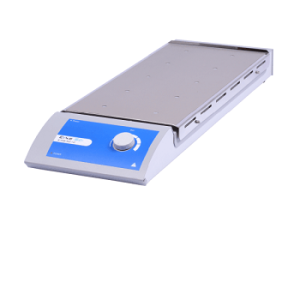
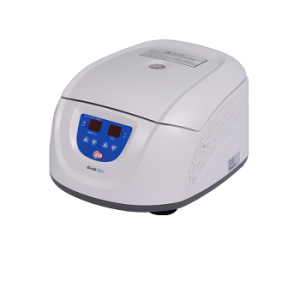
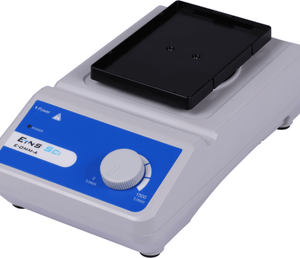
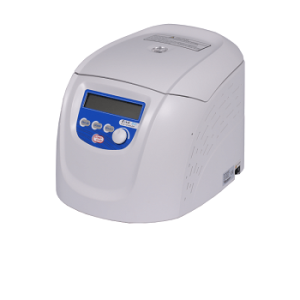
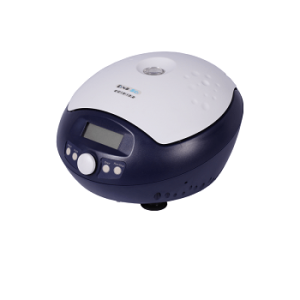
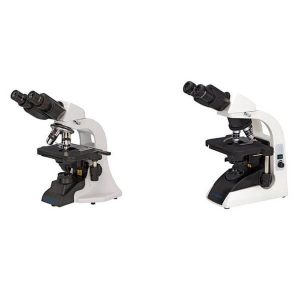
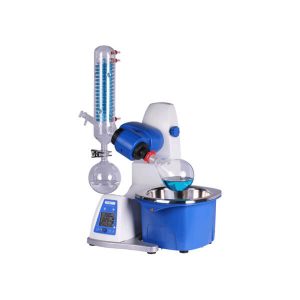

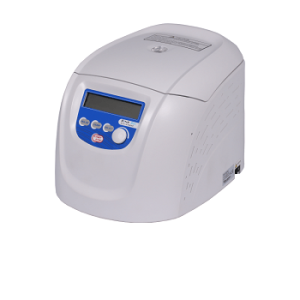
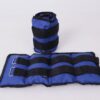

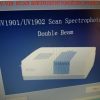
![PM160-10KG MEDICINE BALL WITH HANDLE [10KG]](https://allschoolabs.com/wp-content/uploads/2023/10/pm160-8kg-medicine-ball-with-handle-8kg-300x300-1-100x100.jpg)
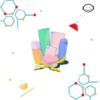
Reviews
There are no reviews yet.